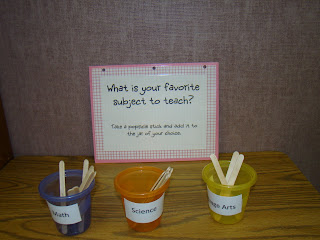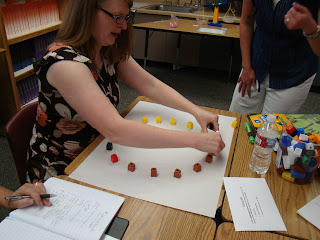I like to have a pumpkin for every student. If that is not possible, one pumpkin per group of students works well too!
- Measure the circumference of the pumpkin using yarn, then take the piece of yarn and use it to create a graph.
- Measure the height of the pumpkin using unifix cubes. Graph the results.
- How much does the pumpkin weigh? Have students stand on the scale with the pumpkin and record the weight. Then have them stand on the scale without the pumpkin and record that weight. Complete the subtraction problem to find the weight of the pumpkin. Graph results.
- Will the pumpkin sink or float? Graph predictions and then graph outcomes.
- Choose one pumpkin to cut open. Have each student reach in a grab a handful of "guts." Have them graph the number of seeds they were able to grab.
- After you have one pumpkin carved out complete the science experiment. Place a candle in the pumpkin and light it. Place the top back on the pumpkin. The flame goes out because there is no oxygen. Then carve a face on the pumpkin and light the candle again, replace the lid and the flame still goes because of the air going through the face holes. Graph predictions and outcomes of the science experiment.
- Let students paint their pumpkin or place fun foam shape stickers on their pumpkin to create a face.









